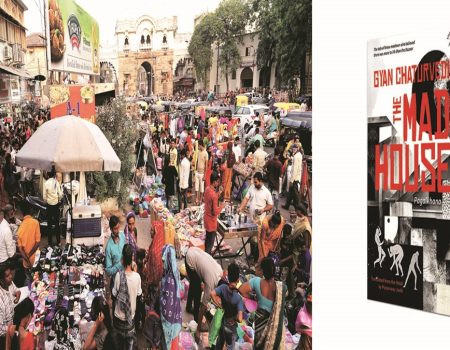Mentioned just a few times in The Wonderful Wizard of Oz by L Frank Baum, Dorothy’s aunt, Emily Gale, is brought to life in this engrossing historical novel.
She’s one of three sisters whose family emigrated from Ireland to the US.
Her heritage is very important to her, she plays the fiddle and sings Irish songs.
As young women, Annie and Emily live together in Chicago — but a distance starts to develop when Annie marries John Gale, “a man of capitalism and industry”, and that strained relationship gets worse.
Emily falls in love with John’s cousin, who couldn’t be more different — “a man of community and nature”.
She has always been attracted to the idea of moving to the prairies, influenced by her mother’s fascination with a pamphlet written by the Irish priest Reverend Thomas Ambrose Butler entitled The State of Kansas and Irish Immigration.
The first time she meets Henry, he talks about his plans to farm there and, while partly frightened at the thought of heading off into the unknown, she’s also excited and prepared to face challenges.
When she joins husband Henry in Kansas her immediate reaction is: “The sense of isolation was unfamiliar and daunting, but it was thrilling.”
Emily throws herself into the traditional lifestyle and the surroundings are idyllic when there is sufficient rain, but they are soon faced with the harsh reality of drought.
When Emily receives news of the tragic death of Annie and her husband John, and has to make the trip to Chicago to collect her orphaned niece Dorothy, she is faced with another challenge. Will she succeed as a surrogate mother?
During the 1920s, the American government encouraged people to buy plots and work the land.
However, they used ill-informed farming practices including removing topsoil, so the “unstoppable power of nature” created an unsustainable environment. Will we ever learn?
Gaynor’s descriptions of the power of nature and its effect on human health during the Dust Bowl years are truly frightening.
“Animals were falling sick and dying from dust fever, and prairie folk were dying from dust pneumonia caused by a layer of dust settling deep in their lungs … There was no colour there, no joy…”
Into this depressing world arrives Adelaide Watson, an aviator, a colourful character who gives them hope by promising to bring them a rainmaker.

Though fictional, she is a reminder of Amelia Earhart. There are wonderful descriptions of the freedom of flight.
The author weaves historic people and events into her narrative as well as references to the original story and its characters.
Integral are the silver shoes Dorothy inherits from her mother, which were changed to the famous red slippers in the film as they stood out better on the Yellow Brick Road.
Emily is a well-rounded and likeable character, whose inner struggles and triumphs are eloquently revealed in her journal entries.
The novel explores relationships between sisters, wives and husbands, and the real meaning of motherhood, as well as the importance of home.
You do not need to have read the L Frank Baum novel or seen the film to enjoy this novel. It’s moving and uplifting, and you will also learn a lot about the 1920s and 1930s in the US. Highly recommended.








No Comment! Be the first one.